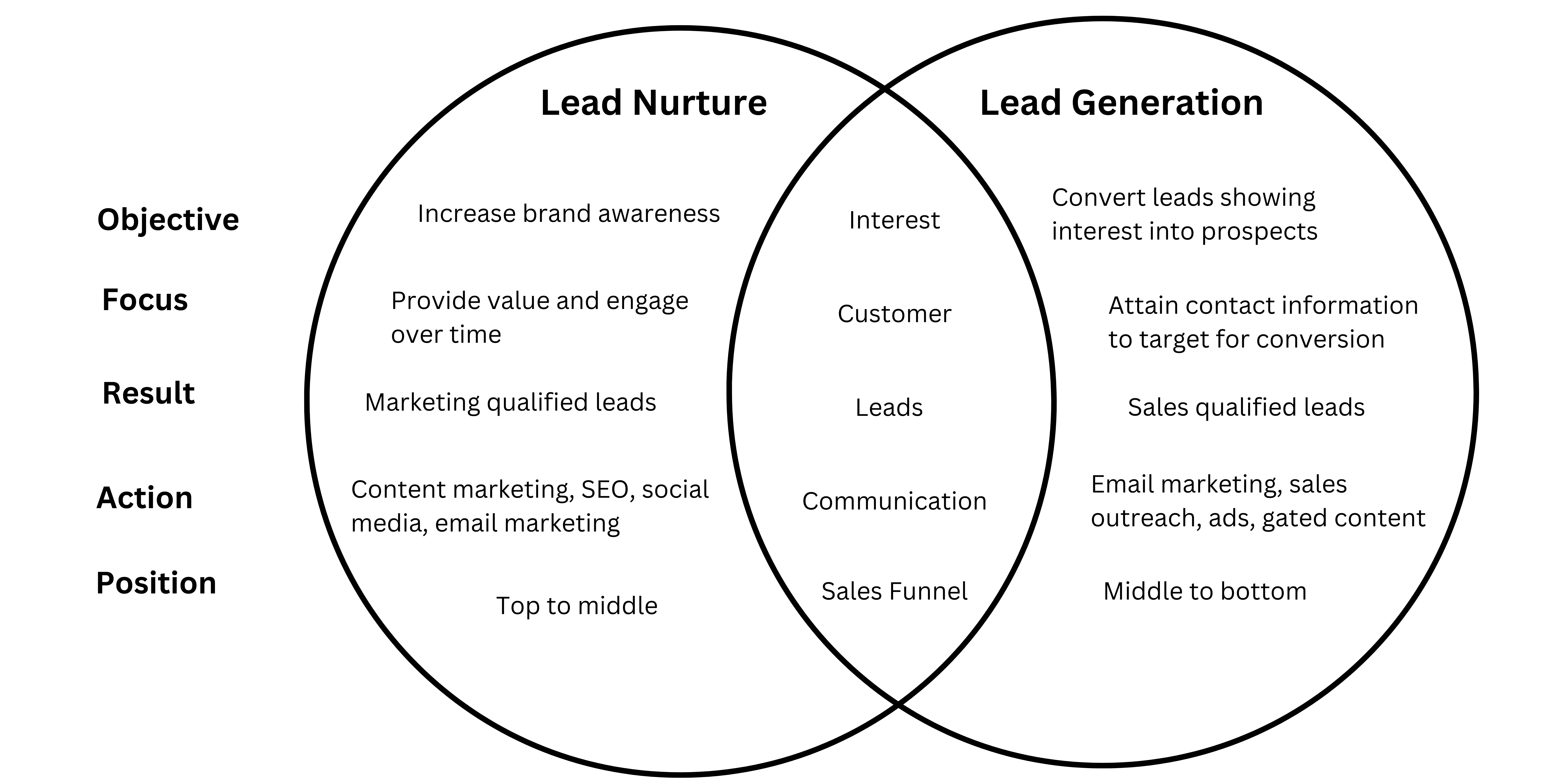Lead generation involves identifying and attracting potential customers. Executing well centers on collecting lead information, which, in smart setups, feeds a sales and marketing funnel that engages these leads with smart, relevant content.
Through various acquisition practices — organic awareness, events, direct mail campaigns, PPC, social media, etc. — businesses grow email lists that become their gold mine, a source for targeted sales marketing, email campaigns, paid advertising and retargeting.
Successful lead generation focuses on transaction-ready clients with messaging, strategy, and — most importantly — timing. Priming an audience for this sort of engagement becomes equally important; that’s where nurturing leads comes into play.
Lead nurture takes that smart, relevant content and lets people connect with the company as a true resource. In turn, this lays a fertile soil for future marketing campaigns that feel even more valuable.
From sales to trust
While automation tools have streamlined the marketing process over the last decade and made it easier to connect with an audience on a larger scale, simply having lots of eyes doesn’t produce results.
Effective marketing gets the right content in front of the right eyes — content that feels authentic, engaging and, most importantly, relevant.
Overly general campaigns with a wide net risk attracting shallow leads that won’t convert into customers. People want solutions that make sense to them specifically, and broad marketing strategies that rely too much on automation can feel impersonal or insincere.
Smart businesses have increasingly begun allocating resources away from lead generation tactics and, instead, focus on nurturing their leads.

By focusing the strategy on specific, problem-solving content, companies engage with and nurture the right leads. Instead of quick results, the goal becomes long-term growth through a genuine connection.
Rather than capturing leads through gated tools or paid ads, strategies now prioritize content, engagement and delivery in a way that builds loyalty and create demand.
Some examples of lead nurturing (also known as demand generation) include:
-
- Value-filled blog articles
-
- Downloadable PDFs or guides
-
- Videos offering solutions to customer problems
-
- Community engagement both online and offline
Content marketing like this addresses client needs while also engaging people at different stages in their customer journeys.
Educational blogs, case studies and thought leadership pieces can bring potential customers into a dialogue that reflects their own lives, and evergreen content continues to generate value long after it’s been published.
Unlike paid ads or limited-time offers, materials like guides or tutorials keep attracting and engaging leads over the long-term without incurring most costs.
Smart, high-quality content also has the potential to attract organic traffic, increasing a business’s visibility and creating demand passively as users discover it.
However, even the best content can’t create customers alone. Businesses need a well-defined strategy and focused targeting which they can execute with clear, sharp emails.
HageyMedia can help define that strategy and create emails which optimize smart content for you. Schedule a call with us today and build a real connection.


